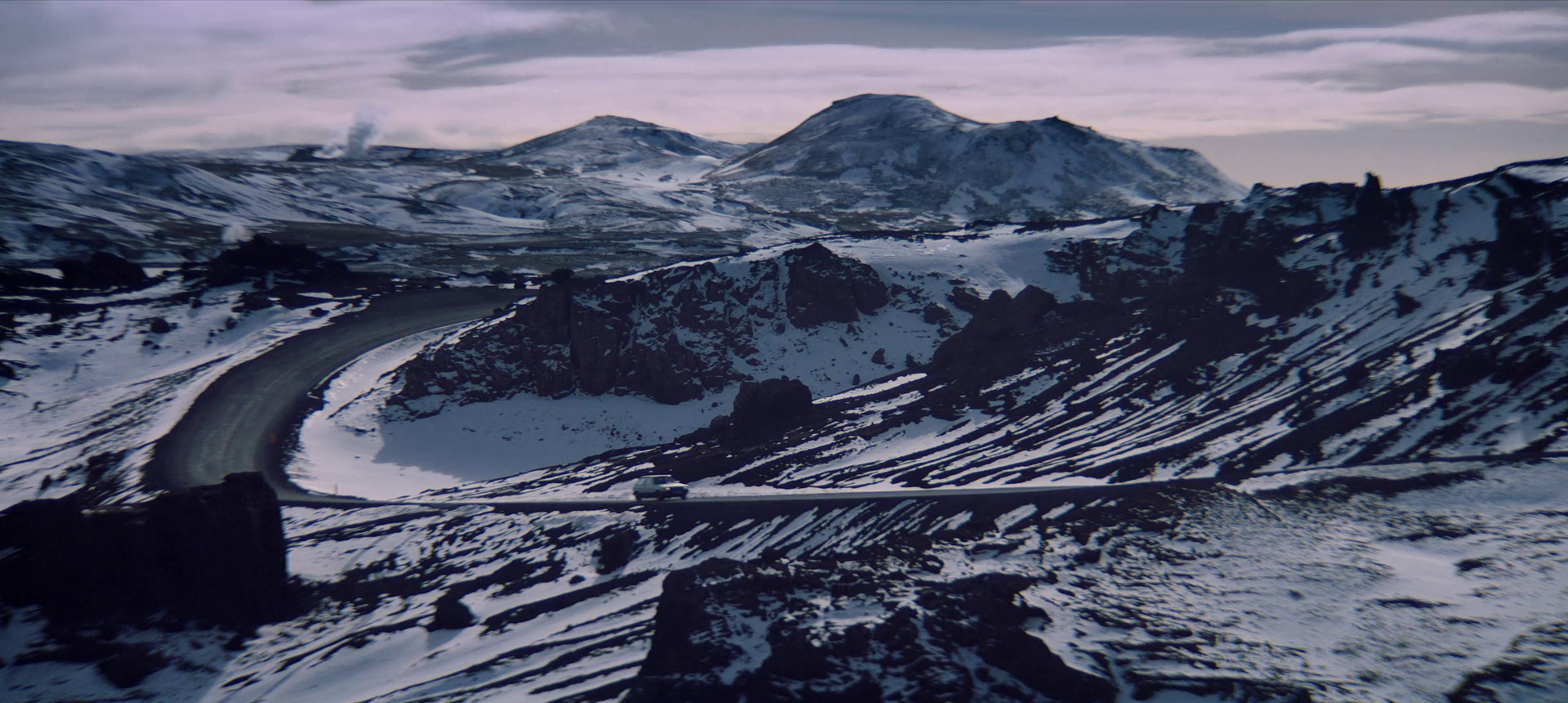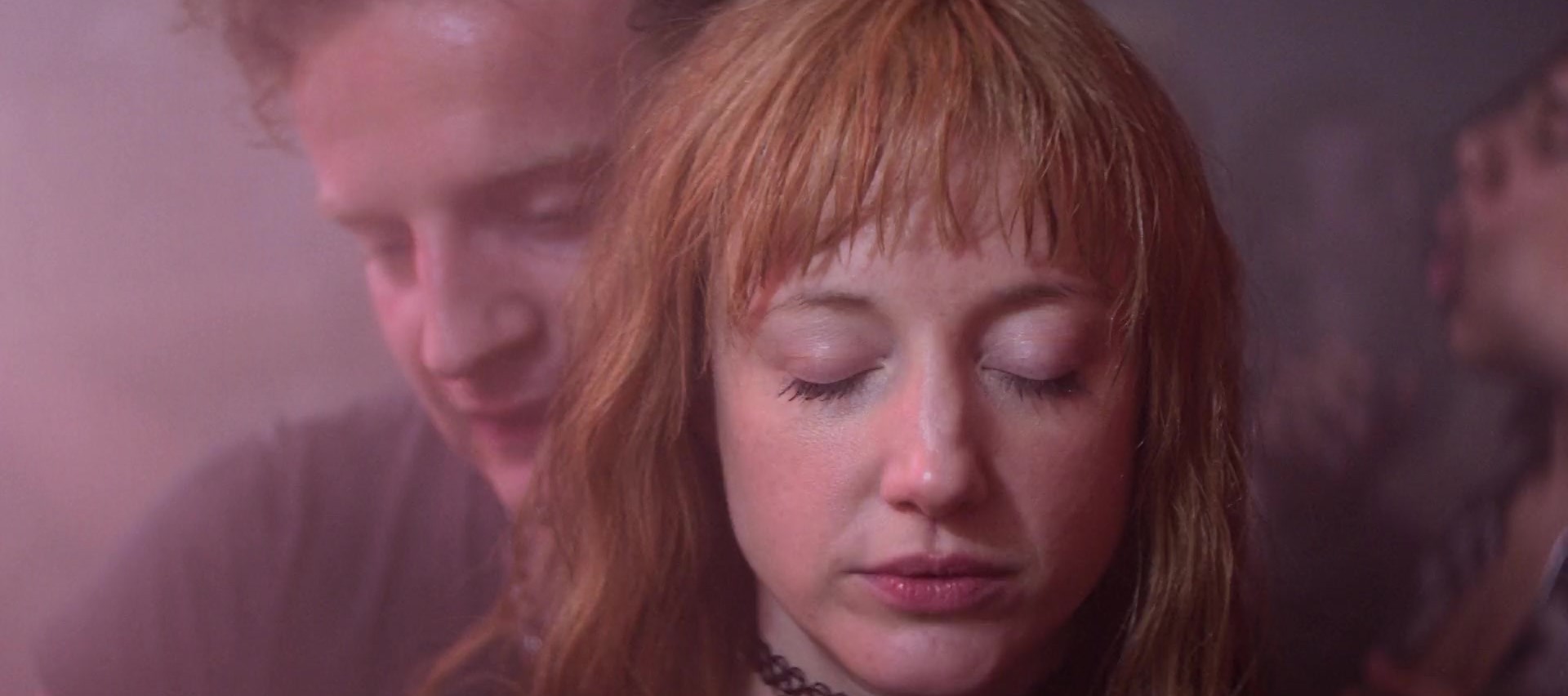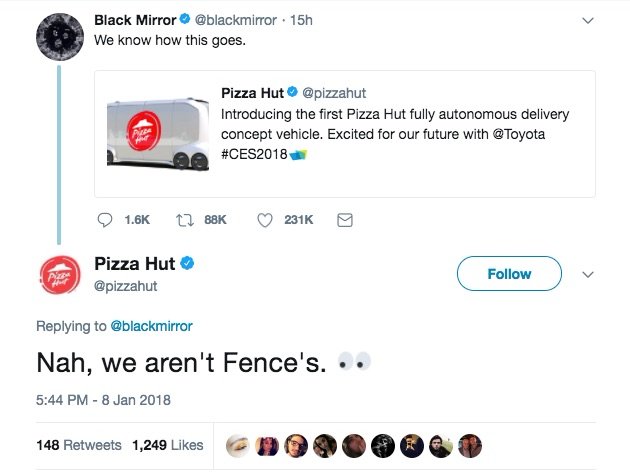
Andrew Gower played Rob in the season 4 Black Mirror episode “Crocodile”.
The episodes opens with a young couple, Mia (Andrea Riseborough) and Rob (Andrew Gower) at a dance party in Iceland. Throughout the night they are seen drinking and consuming drugs. While driving home, a still drunken and intoxicated Rob hits and kills a a cyclist on the road. Mia wants to call the police but Rob begs her to help him to cover up the crime by throwing the body and bicycle into the nearby fjord.
Fifteen years later, Mia is a successful architect and happily married with a 9 year old son. Rob hasn’t fared as well, he’s a recovering drug addict, newly sober, “dried up dog shite”, as he describes himself. He seeks out Mia in a hotel in the city and tells her, he is ready to make amends and that he wants to write an anonymous letter to the widow of the man he killed and whose body was never discovered. Mia is afraid the letter will be traced back to them and could potentially destroy her family and career, and she is willing to do everything to protect her new life.
We also meet Shadzia (Kiran Sonia Sawar), a young insurance investigator, who questions witnesses of an accident, that happened in front of Mia’s hotel, where a self-driving pizza delivery truck hit and injured a pedestrian. She uses a device called “Recaller” to extract the memories of claimants and witnesses, although “memories can be subjective”, as she explains. Inevitably, Shadzia’s work leads her to Mia, who was seen standing at her hotel room window by another witness.
Watch the offcial trailer here:
“Crocodile” was written by show creator Charlie Brooker and directed by John Hillcoat. Filming took place in February and March 2017 in Iceland (also reported by Iceland Review).
On 25 August 2017 Netflix officially revealed the episode titles for season 4 of Black Mirror in a new trailer as well as the names of directors and cast members. All episodes were released simultanously world wide on Netflix on 29 December 2017.
The episode received very mixed reviews, many praising the performances of the two lead actresses as well as the cinematography of the stunning Icelandic landscape but felt it only used “violence and cruelty for their own sake” and called the episode “grim and upsetting” and “arguably the bleakest episode” of season 4.
The chilling, gruesome story strikes a stark contrast with the breathtaking mountains. The episode was filmed at different locations across the countryside as well as downtown Reykjavík. The opening scenes were filmed near Lake Kleifarvatn on the Reykjanes peninsula. About a 30-minute drive from Reykjavík, Kleifarvatn lake is a great place for a scenic walk or jog. Another nearby location was the Grænavatn lake, which literally means “green lake.” It’s a colourful, water-filled volcanic crater with a high sulphur content.
One scene was filmed at the Harpa Concert Hall where Mia gives a speech. The episode was filmed in February 2017, when Reykjavík happened to experience a record snowfall of 51cm over a single night. The crew had to stop filming that night, and you can see the snowy streets in the episode.
(Source: Grapevine)

Originally Charlie Brooker imagined Scotland as a filming location until Netflix suggested Iceland. Changing locations also caused some problems as Iceland was faced with the largest snowfall in forty years, which forced the writers to add a line of dialogue to account for the sudden snow accumulation.
“Actually, the night we shot the accident with the pizza truck, they had their biggest snowfall in 40 years. So we got around a continuity problem by having a character say they think it’s starting to snow at some point. Nobody’s noticed, but it got us around a massive problem because suddenly there was a snowfall after we turned the cameras the other way.”
(Source: EW)
Although in the original version of the script the main protagonist was supposed to be male, Andrea Riseborough (who initially read for a different part) asked if the character could be female. Both Charlie Brooker and executive producer Annabel Jones liked the idea and the script was re-written to accomodate the change.
“Andrea read for one of the other parts and she really liked the journey of the protagonist and she challenged us and said, ‘Do you think it could be a woman?'” Jones recalls of the episode, which was directed by John Hillcoat (Triple Nine, Lawless) and filmed in Iceland. “Then we sort of said, ‘Oh, hold on.’ We hadn’t quite thought about that. We questioned it and worked it. Apart from the physicality element of it — a requirement that plays out in the episode’s first few minutes — we thought, ‘How often do you see a mother reduced to this level of desperation?’ Then we thought that was actually quite interesting, and that’s the result of Andrea’s role.”
(Source: Hollywood Reporter)

The title of the episode has been the centre of much speculation.
The phrase ‘crocodile tears’ refers to “tears or expressions of sorrow that are insincere” and while Mia, who has a husband and a son and a successful career, initially appears to be more grief-stricken, vulnerable and emotional than Rob, we discover that in fact she’s capable of far more cold-blooded violence than him. The chilly Icelandic landscape where the episode is shot lends weight to this feeling of iciness and emotional isolation, and the promotional image focusing on Mia’s face seemingly drenched with tears surely asks the audience to make the association.
Like a crocodile, Mia is cold-blooded and thick-skinned. Like a crocodile waiting quietly for its prey, she remains still (pretending to be a log or indeed an architect and family woman…) until she is threatened, at which point she reveals herself to be a ruthless killer.
(Source: Digital Spy)
In the behind-the-scenes book “Inside Black Mirror” director John Hillcoat provides his own thoughts on the title and reveals that he himself had never been given a real explanation either:
The story’s cruel logic has a deadly vice-like grip, akin to a crocodile’s jaw. […] [Mia’s] reptilian brain takes over, like a cornered lizard or snake… or crocodile!

The book also contains an interview with show creator Charlie Brooker and we are finally given a definite answer:
The genesis of the title actually relates to [a] previous incarnation of the script, about [a] person who’d witnessed their mother’s murder at the age of two. She’d grown into this very anxious person, who saw the world as incredibly threatening.
Here’s the analogy: imagine that your life is a simulated boat ride down a river. If you started playing that, as a VR experience, it could be sunny and beautiful and you love it. But if it’s scripted that occassional random events will happen, such as a crocodile attacking you, well now that’s slightly different. And if you are really unlucky, and a crocodile attacks you in the first minute of you playing that game, then you think you’re in a horror game. You think, “From that point on, I could get attacked at any moment,” and you can never relax and enjoy the rest of that boat ride, because you think it’s a crocodile attack simulator.
So that’s what Crocodile is: an analogy for somebody who’d been traumatised at an early age, and might be troubled by life forever and never able to relax. The title stuck even though the story completely changed, and then the title didn’t actually make sense. But it’s also weirdly fitting.
Only a week after the episode was broadcast, Toyota revealed their plans for a self-driving vehicle.
The company touted the vehicle’s potential to serve as a multi-purpose delivery vehicle, mobile office, or storefront. Before the reveal, Toyota announced a partnership with Pizza Hut and suggested that the vehicle could be used to deliver pizza.
(Source: Business Insider)
This seemed to be too much of a coincidence and fans of the show and Netflix voiced their concern on social media.

(Fence’s is the name of the fictional pizza company in “Crocodile”)
Episode Synopsis:
Watch some of Andrew’s scenes from “Crocodile” here:
- Visit our Black Mirror Gallery!
- Read all our Black Mirror News!